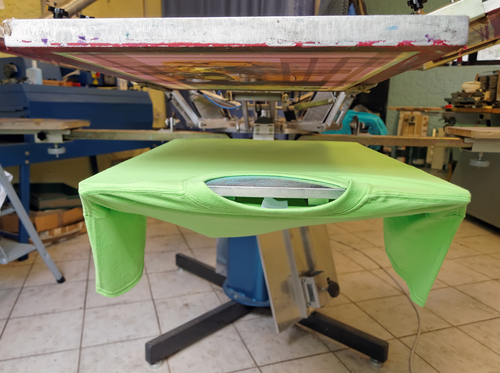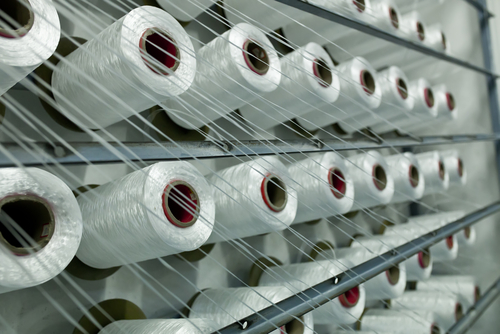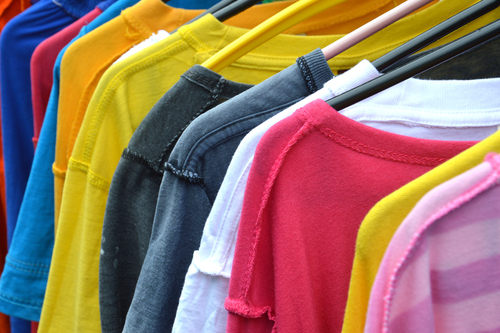Which Blank T-Shirts are Best for Screen Printing?

Choosing the right color, fabric and style for screen printing a t-shirt is not as simple as you might think. After all, it is extremely frustrating to spend the time, money and effort on adding a design to a t-shirt only to have it fade and disappear after being subjected to the rigors of the washing and drying cycle in your laundry.
This is especially important to businesses wanting to project a professional image. They need to know their logo and design will stand the test of time, continuing to help promote their brand in a positive manner.
What is the difference?
T-shirt fabric is generally one of three types: natural (cotton or ringspun cotton), synthetic and man-made (polyester or nylon) or a mix/blend of the two.
You might think that regardless of the material selected, the image you choose will appear exactly the same. Unfortunately, that is not the case. The key thing to remember is the way in which these materials are made. Synthetic or man-made materials are actually made from plastics and oils like polymers and are combined in a chemical reaction via condensation.
How does screen printing work?
When you screen print, you are applying ink through a silk screen onto fabric by means of pressure. The silk screen fabric works like a stencil with areas of varying permeability, and by pushing the ink through, you can create complex patterns.
It is important to utilize a blank t-shirt for your screen printing, as the image selected is superimposed upon whatever is already on the t-shirt. Any other images already on the t-shirt could overpower or conflict with your screen printed image.
The best material for screen printing t-shirts
While you might think all materials will work, some of them are simply unsuitable for screen printing. Synthetic fibers, being made from oils in essence, generally act to repel water. This is why they are so good for exercise gear, but because of the process used to screen print t-shirts, they will not accept an image as well as cotton fibers.
Cotton, on the other hand, is an excellent choice for screen printing, as it will absorb the colors. Choosing the right color or blend of cotton is key, though as while 100% cotton is best for the image, it might not always suit your particular needs and requirements.
Ringspun cotton or regular cotton?
What about ringspun cotton? Is it a man-made fabric? While it is newer and the term is not as familiar, the main difference between the fabrics is not what it is made of, but rather how it is made.
The term “ring spinning” specifically speaks to the process of creation, where the yarn is made by straightening, thinning and softening the cotton strands. The difference in feel and weight between the two types is easily noticeable.

Ringspun cotton is stronger and longer lasting than regular cotton, but because the creation process is more difficult and complex, it is also more expensive.
With regards to the overall best material for screen printing, thicker materials are better, as they tend to absorb more ink with richer and more vibrant colors.
Black, white or something in between?
Choosing a color is not as simple as you might think. You also need to determine who will be wearing your t-shirt and the environment they will be wearing it in.
Choosing a black t-shirt or any colored t-shirt very much depends on the logo and design being used. It is important to ensure the image is visible and clearly identifiable.

Conversely, white t-shirts are excellent in high visibility situations where you want the image to pop. With white t-shirts, you can almost guarantee all of the colors in your image will be vibrant, crisp and bright.
Conclusion
Is there one right answer to the question “which blank t-shirt is the best for screen printing?” The t-shirt you choose depends on the image you are trying to project, the audience you are trying to reach and the way you want it to look and feel. There are many different options available, and you should consider how your image will look on the t-shirt.
Keep comfort and durability in mind, as you want it to be worn and used, but also consider where it will be worn and for what purpose. Remember cotton is available as 100% cotton, ringspun cotton or a mix of cotton and another man-made fabric (for example 60/40 cotton/poly), so you have options.
Higher quality lasts longer and will give you a bigger bang for your buck, so remember that when making your choice.


